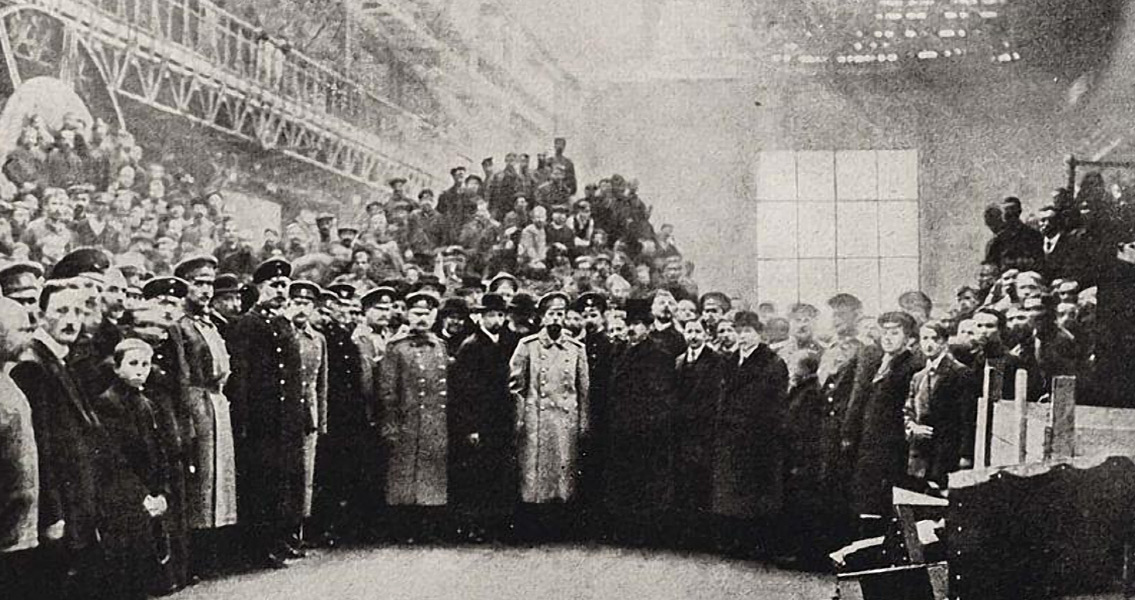<![CDATA[Over a matter of days in February 1917 (on the Julian Calendar), the course of Russian history was drastically altered in what is now known as the February Revolution. The first steps of the February Revolution took place on 22nd February, 1917, when workers at the Putilov Steel Factory in Petrograd went on strike. On the same day the Tsar, Nicholas II, left the Russian capital to visit troops fighting on the frontline against Germany in the First World War. Events at the Putilov Steel Works proved a catalyst for wider strike action, with events escalating rapidly over the following days. On 2nd March Nicholas abdicated the throne, bringing to an end centuries of rule by the Romanov Dynasty in Russia. At the heart of the Putilov strikes were a campaign by workers for higher wages and the severe response of the factory owners. On 18th February workers at the factory demanded a wage increase to bring their pay in line with the rising prices for food and goods in Russia. The workers became embroiled in a bitter dispute with the mill's authorities, who refused to meet the workers' demands and locked some 20,000 employees out of the factory. On 22nd February the workers called a strike, with some 100,000 workers in factories throughout Petrograd downing tools in support. Out of the city, the Tsar was unaware of the severity of the situation in Petrograd, the strike escalating and spreading each day. The 23rd February was International Women's Day, a fact which pushed thousands of women to protest, supporting the workers' strikes while also issuing their own demands for greater gender equality. Years of resentment at the political situation in Russia seemed to be exploding at once, protesters with a host of differing demands joining forces and rapidly taking over the streets of the city. By 24th February local police forces were severely outnumbered, unable to bring the situation under control. Three days into the mass strikes, Nicholas II ordered Russian troops into Petrograd to break up the demonstrations and return order. It was a move which proved disastrous. At several locations throughout the city confrontations between soldiers and citizens ended with the army killing demonstrators. Crucially, the deaths didn't quell the protests, if anything they gave the demonstrators a renewed vigour, threatening to turn the city into a war zone. Perhaps shocked by the intensity of the protests, or the realisation that they were entering a war against Petrograd's citizens, the soldiers in the city rebelled. Some joined the protesters, others started looting the city. Suddenly, the Tsar was left with no way of returning order to Petrograd, the bulk of the armed forces otherwise engaged with Russia's increasingly disastrous involvement in the First World War. While the protests had been going on around the city, workers in various factories had elected members to the Petrograd Soviet (Worker's Council), giving a political voice to the disparate wave of protest that smothered Petrograd. It had become clear that the Tsar had no means of restoring order in Russia, especially as so much of the protest was aimed at him specifically. A provisional government was established, with the aim of negotiating the return of order to Petrograd. On 2nd March, 1917, Tsar Nicholas abdicated his throne. In less than two weeks the situation in Petrograd had changed the political complexion of Russia permanently. ]]>
February Revolution – History Changed in Less than a Fortnight
